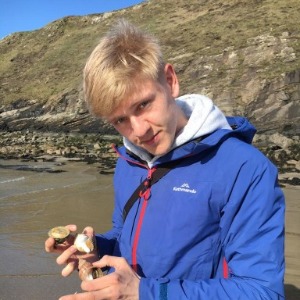Jun 01, 2022
Phenotyping C. elegans behaviour on E. coli bacteria supplemented with enterobactin, iron or paraquat
- 1Imperial College London

Protocol Citation: Saul Moore 2022. Phenotyping C. elegans behaviour on E. coli bacteria supplemented with enterobactin, iron or paraquat. protocols.io https://dx.doi.org/10.17504/protocols.io.36wgq7ybkvk5/v1
License: This is an open access protocol distributed under the terms of the Creative Commons Attribution License, which permits unrestricted use, distribution, and reproduction in any medium, provided the original author and source are credited
Protocol status: Working
We use this protocol and it’s working
Created: June 01, 2022
Last Modified: June 01, 2022
Protocol Integer ID: 63666
Keywords: Keio, E. coli, enterobactin, iron, paraquat, C. elegans, behaviour
Disclaimer
DISCLAIMER – FOR INFORMATIONAL PURPOSES ONLY; USE AT YOUR OWN RISK
The protocol content here is for informational purposes only and does not constitute legal, medical, clinical, or safety advice, or otherwise; content added to protocols.io is not peer reviewed and may not have undergone a formal approval of any kind. Information presented in this protocol should not substitute for independent professional judgment, advice, diagnosis, or treatment. Any action you take or refrain from taking using or relying upon the information presented here is strictly at your own risk. You agree that neither the Company nor any of the authors, contributors, administrators, or anyone else associated with protocols.io, can be held responsible for your use of the information contained in or linked to this protocol or any of our Sites/Apps and Services.
Abstract
Testing whether Keio Collection E. coli mutants supplemented with exogenous enterobactin, iron(III) chloride, iron(III) sulfate or paraquat elicit a behavioural response when fed to C. elegans.
Materials
To make 1L of Nematode Growth Media (NGM) agar:
- 3g NaCl
- 2.5g Bactopeptone
- 17g Agar powder
- 1L ddH2O
Salts added post-autoclave:
- 25mL KH2PO4 (pH=6.0)
- 1mL MgSO4 [1M]
- 1mL CaCl2 [1M]
- 1mL Cholesterol (5mg/mL in EtOH)
1mg/mL enterobactin (in DMSO)
160uL of each of the following added to 4mL agar:
- 270mg FeCl3 [270.295 g/mol (hexahydrate) in H2O]
- 399mg Fe2(SO4)3 [399.88 g/mol (anhydrous) in H2O]
- Paraquat dichloride (https://www.fishersci.com/shop/products/paraquat-dichloride-95-ultra-scientific/USPST740)
[0.5, 1, 2, and 4mM]
Preparing 6-well plates for imaging
Preparing 6-well plates for imaging
Add 25mL fresh LB broth to each of 2 Falcon tubes, and inoculate with the BW25113 (Keio Collection parent strain) and the E. coli gene-deletion mutant of interest, respectively
Place inoculations to grow overnight in a shaking incubator (37°C, 200rpm)
Prepare 1L NGM agar and pour 4mL into each well of 40 x 6-well plates (imaging plates). Leave to dry under a hood (~2 hours) until they lose between 3 - 5% of their original weight after pouring. Store at 4°C until seeding with bacterial lawns.
Remove the imaging plates from 4°C and dry under a hood for 30 minutes to prevent condensation.
Remove the bacterial cultures from 4°C and leave on the bench for 30 minutes to acclimate to room temperature.
Pipette 30μL of bacterial culture into the centre of each well, taking care not to damage the agar with the pipette tip. Seed half of the 6-well plates with BW25113 control, and the other half with the desired test bacteria
Leave the seeded plates to dry for 20 minutes under the hood, then transfer to a 25°C incubator and leave to grow for a further 7 hours and 40 minutes (for a total of 8 hours lawn growth time), before storing at 4°C until tracking (max 2 days)
On the day of tracking, remove the seeded plates from 4°C and dry under a hood for 30 minutes to remove condensation
Approximately 1 - 2 hours prior to adding worms and imaging, exogenously add the following on top of the lawns in the desired wells, as per the experimental design, and leave to dry under a hood:
- 5uL of 1mg/mL enterobactin (in DMSO)
- 160ul of 1 and 4mM iron(III) chloride (in H2O)
- 160ul of 1 and 4mM iron(III) sulfate (in H2O)
- 160ul of 0.5, 1, 2 and 4mM paraquat dichloride (in H2O)
Imaging with worm tracking rig (Hydra)
Imaging with worm tracking rig (Hydra)
Prior to tracking, ensure that the imaging cave air conditioning is turned on (and there has not been a power-cut) and also empty the dehumidifier waste water tray (see pre-imaging checklist)
Remove the plate of age-matched (N2 Bristol, Day1 adult) worms from 20°C incubator
Using a platinum pick, gently but swiftly transfer 10 worms onto the edge of the bacterial lawn of each well in a single imaging plate at a time
Quickly transport the 6-well plates to the imaging cave and place them under the rigs. Ensure that the plate is in the correct orientation for the recording so that the positions of each of the wells under the cameras is correct and matches the recorded treatment information in the metadata
Track worm behaviour on each well for a total of 36 minutes (at 25 fps), applying a 10-second blue-light stimulus at the 30th, 31st and 32nd minute timepoints
